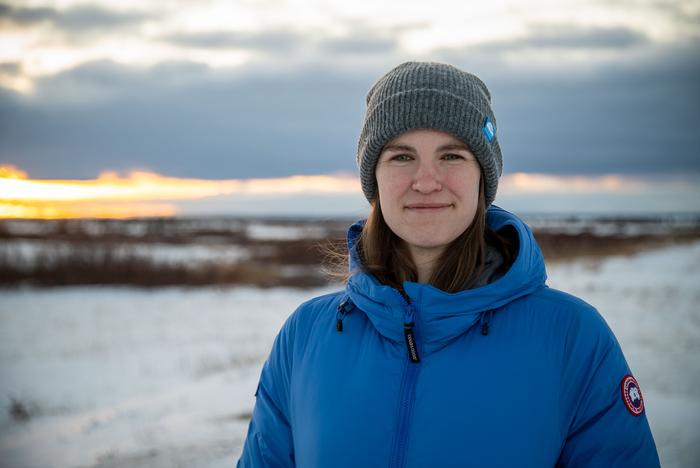Researchers from the University of Toronto Scarborough have made a notable breakthrough in understanding the alarming decline of polar bear populations, particularly those inhabiting Western Hudson Bay. This decline is intricately linked to the accelerating impacts of climate change, notably the loss of sea ice habitat essential for these apex predators. The scientists’ findings provide substantial evidence that the diminishing ice cover is not just a backdrop but is directly influencing the nutritional intake and reproductive success of polar bears.
The research team developed a sophisticated bio-energetic model, which intricately examines the energy dynamics involved in the survival of polar bears. This model deduces that the visible decline in polar bear populations can be attributed to these magnificent creatures not receiving enough energy from their primary food source, seals. This energy deprivation is a direct consequence of reduced hunting opportunities, which are a result of shortened periods of sea ice formation. As winter thaws occur earlier each year and freeze later than ever, hunting windows for polar bears are being systematically reduced.
Lead author Louise Archer explains the mechanics of this phenomenon: “When sea ice disappears, bears are constrained to land for longer stretches, straining their ability to hunt seals. This shift results in bears experiencing prolonged periods of fasting.” The implications are profound; with a decreased energy intake, the bears face challenges in maintaining their health, which naturally leads to decreased reproductive rates and lower cub survival rates.
Interest in the details of this model is heightened due to its exceptional ability to simulate the entire life cycle of polar bears, from the vulnerable cub stage to full maturity. The researchers cross-referenced their model findings with comprehensive monitoring data collected over four decades, from 1979 to 2021. This comparison reveals a staggering reality: bear populations in Western Hudson Bay have plummeted by nearly 50 percent, and data indicates a troubling drop in average body mass. Adult female polar bears have seen a weight loss of around 39 kilograms (86 pounds), while one-year-old cubs have lost approximately 26 kilograms (57 pounds) over this same period.
The relationship between decreased sea ice and polar bear health outlined in this research is alarming. The bio-energetic model reveals a sobering correlation, but more importantly, it uncovers the underlying mechanisms that link ice loss to population decline. As co-author Péter Molnár articulates, the importance is not merely in presenting a statistical correlation; rather, it is in elucidating the direct consequences of sea ice loss. “We can model what happens without ice, translating those scenarios into real-world outcomes for polar bears,” he noted, emphasizing the urgency of the situation.
Moreover, the effects on mother bears and their cubs are particularly severe. Conditions produced by climate change are having a disproportionate effect on cubs during their critical early months. As hunting seasons shorten, mother bears produce less milk for their young, which jeopardizes cub survival rates. Monitoring data from the study highlights that cub litter sizes have decreased by approximately 11 percent over the last four decades, and bears are prolonging the time their cubs stay with them because the young cannot yet fend for themselves due to the scarcity of food.
Recognizing the broader implications of this model is paramount. Western Hudson Bay is often viewed as an indicator of wider polar bear health across the globe. As the Arctic continues to warm, its temperature is rising at four times the rate of the global average. This alarming trend portends similar devastating consequences for polar bear populations elsewhere, extending beyond the localized issues of Western Hudson Bay.
The research team’s sophisticated model is critical for predicting the future of polar bears under climate change scenarios. As Molnár points out, “Because of our extensive historical data, we can confidently assert that the deterioration experienced by polar bears in this region will likely mirror trends observed in other populations as they face analogous threats posed by climate change.” This modeling work provides an essential tool for future research, conservation strategies, and policy-making aimed at protecting polar bears worldwide.
In conclusion, the study sheds light on the dire fate of polar bears, framing the narrative as one of urgency and importance. The intricate link between sea ice loss and disappearing polar bear populations illustrates how climate change significantly disrupts Arctic ecosystems. It highlights the critical need for mitigating climate change impacts and reinforces the importance of scientific research in informing the public and policymakers. As our planet continues to warm, understanding the biology and ecology of these iconic symbols of the Arctic becomes an increasingly vital task. The insights drawn from this research provide a foundational understanding that aims to inspire action toward conservation efforts that could help reverse some adverse trends affecting polar bears and their diminishing habitats.
Subject of Research: The impact of climate change on polar bear populations through loss of sea ice and its effects on energy intake and reproduction.
Article Title: Energetic constraints drive the decline of a sentinel polar bear population
News Publication Date: 30-Jan-2025
Web References: Science Journal
References: Natural Sciences and Engineering Research Council of Canada; Canada Foundation for Innovation.
Image Credits: Handcraft Creative
Keywords: Polar Bears, Climate Change, Sea Ice Decline, Population Analysis, Bio-energetic Model, Wildlife Conservation, Arctic Ecosystems.
Tags: bio-energetic model researchclimate change and animal survivalclimate change impact on wildlifeconservation strategies for polar bearseffects of sea ice on breeding successenergy deficit in polar bearsfood scarcity among polar bearshunting opportunities for polar bearsnutritional challenges for apex predatorsPolar bear population declinesea ice habitat lossWestern Hudson Bay polar bears





